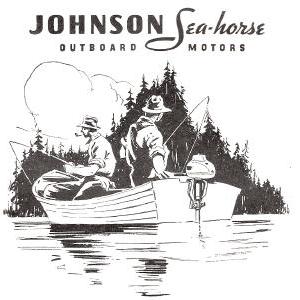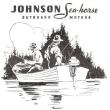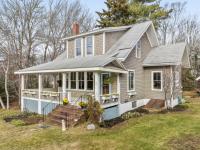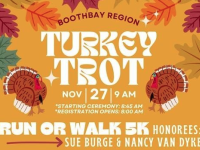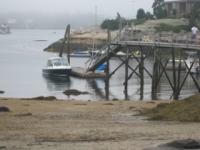Johnson outboard motors and the men who made them
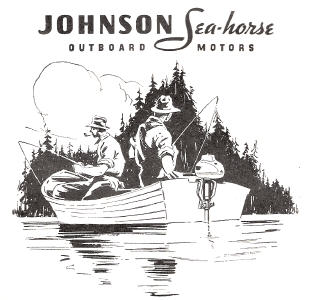 The Boothbay Railway Village will host an illustrated lecture on the genius and partnership of the four Johnson brothers of Terre Haute, Indiana. West Boothbay Harbor summer resident Larry Stevenson is a passionate collector and will bring along examples of the Johnson brand from his personal collection of vintage outboards.
The Boothbay Railway Village will host an illustrated lecture on the genius and partnership of the four Johnson brothers of Terre Haute, Indiana. West Boothbay Harbor summer resident Larry Stevenson is a passionate collector and will bring along examples of the Johnson brand from his personal collection of vintage outboards.
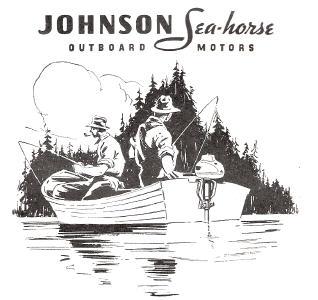 The Boothbay Railway Village will host an illustrated lecture on the genius and partnership of the four Johnson brothers of Terre Haute, Indiana. West Boothbay Harbor summer resident Larry Stevenson is a passionate collector and will bring along examples of the Johnson brand from his personal collection of vintage outboards.
The Boothbay Railway Village will host an illustrated lecture on the genius and partnership of the four Johnson brothers of Terre Haute, Indiana. West Boothbay Harbor summer resident Larry Stevenson is a passionate collector and will bring along examples of the Johnson brand from his personal collection of vintage outboards.
On Wednesday, Aug. 12 at 7 p.m., the Boothbay Railway Village will host the next installment of an illustrated lecture series on the foundations of outboard motor development in the historic 1847 Boothbay Town Hall. The series on the history of outboard motors is presented by West Boothbay Harbor summer resident Larry Stevenson.
This session is about the genius and partnership of the four Johnson brothers of Terre Haute, Indiana, whose experiences mirror the incredible age of American mechanical innovation in the first half of the 20th century.
They started building inboard 2-cycle marine engines in 1903 in a barn behind the house, along with matching boats. By 1908, they were making V4, V6, V8, and V12 aircraft and marine engines. In 1910, they built the first U.S. monoplane to exhibit their aircraft engines. By 1912, their V-12 was making 180hp, when disaster struck the factory. Torrential rain, followed by flooding and a direct hit from a tornado, wiped it all out, drawings, machinery, and everything else.
Incredibly, they started again with just three of the original Johnson brothers, and the aid of their brother-in-law, William Conover, by creating Johnson Brothers Engineering in 1918. They moved to South Bend and built Motor Wheels, a device to motorize an ordinary bicycle.
Starting in 1922, they designed and built Johnson Outboard Motors, a radical new, lightweight outboard made largely of aluminum. By the mid-1920s, they surpassed Evinrude in sales, and dominated the outboard racing scene.
In 1929, they were slow to respond to the changing conditions of the Depression, and went bankrupt. The bankrupt company was purchased by Ralph Evinrude and Stephen Briggs in 1935, to be a part of OMC, run completely independently of Evinrude, and the company went on to have many outboard firsts, and survived until the early 2000s, when new owner Bombardier Recreational Products of Canada, felt there was no longer enough room in the marketplace to have two competing brands, Johnson and Evinrude.
The Johnson brothers held over two hundred patents, and revolutionized the American outboard motor.
The final session on Mercury is scheduled for Aug. 26.
Stevenson is Navy and Coast Guard Auxiliary veteran, who is a retired UPS International Industrial Engineering Manager in the international operation. He has lived in the UK, Belgium, and Germany, and has a passion for art history, industrial design, sailing, history, and collecting old outboard motors.
This lecture is part of a new Summer Lecture Series at the Boothbay Railway Village. The talk will take place inside the historic 1847 Boothbay Town Hall at the Boothbay Railway Village. A donation of $5 is suggested for admission and proceeds will benefit the Museum’s general operating fund. The Boothbay Railway Village is located at 586 Wiscasset Road, Route 27 in Boothbay, Maine. For more information find Boothbay Railway Village on Facebook or visit the Museum’s website at www.railwayvillage.org.
Event Date
Address
United States

